Click to view our Accessibility Statement or contact us with accessibility-related questions





Showing 1 of 675 conversations about:

Drop + Dan Durston X-Mid 1P Tent

GrandPoobah1
5
Apr 23, 2019
Hi Dan, what is the deign intent for the guylines? Can you post a pic, including the other loops that someone else noted? For A-frame tents they usually are intended to run along the ridgeline but I see people pitching them slightly off. In my experience this causes noticeable sag in the fabric. Speaking of sag, what about the aux guylines that attach in what is normally the door roll-up loop? The only way I have been able to make this work is with some type of a lifter (branch, etc), otherwise the pulldown force sags the entire panel that the guyline is intended to reinforce.

dandurston
5116
Dan Durston
Apr 23, 2019
GrandPoobah1I'll preface this by saying that additional guyouts points like the peak guylines should only be added once you have a nice pitch using only the 4 corner stakes and two poles. Sometimes I see people compensating for flaws in the core pitch using the additional stake out points but these should only be used to beef up the tent for tough weather, not correct problems in the basic shape. With the basic pitch I am seeing about an equal number of issues arising from either the rectangle not being square and the poles between too tall. The former gives a wonky shape with some wrinkles, while the latter gives sides that are loose in the middle.
Once you have a good basic pitch, the ideal orientation for the peak guylines is off to one side (the door side) because unlike an A frame, the X-Mid isn't symmetrical around the ridgeline. Rather, the ridgeline is anchored more strongly on one side from the shallower angle corner seam. Thus, the peak guyline gets angled towards to the other corner seam to help out support the steeper corner on this side. Looking at the diagram below, the upper peak is anchored well from the top left corner because this is a shallower corner seam but not as well by the top right corner because this is a steeper corner (like a cellphone tower, the further away you stake the lines the stronger it is). So the peak guylines go a bit off to this steeper corner side so it pulls out on the guyline and beefs up this side:
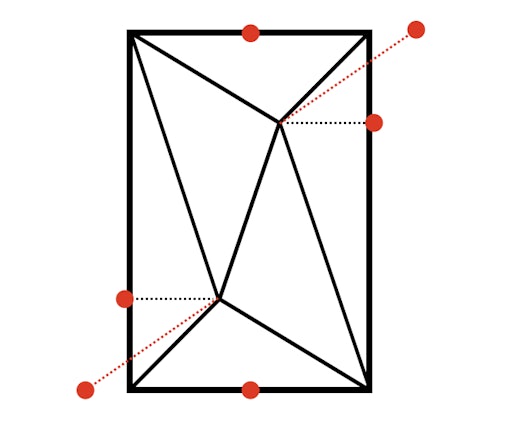
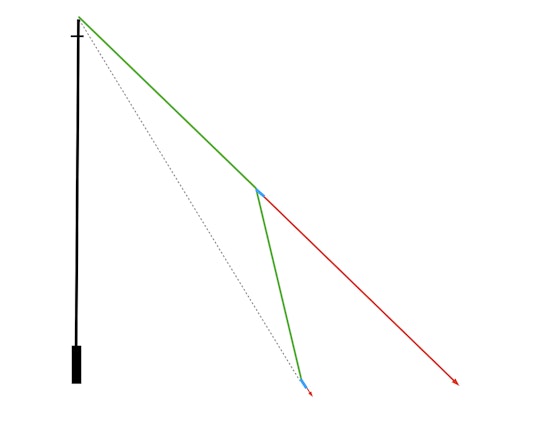
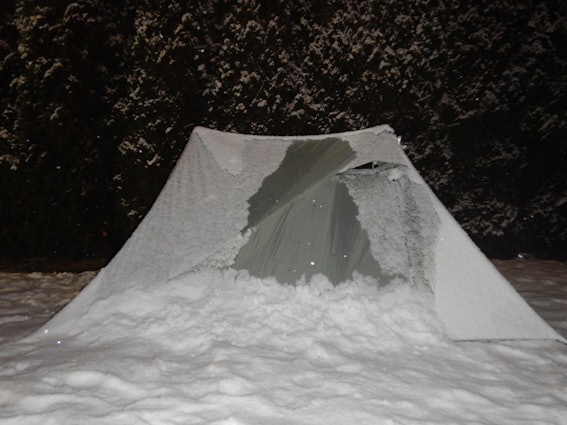
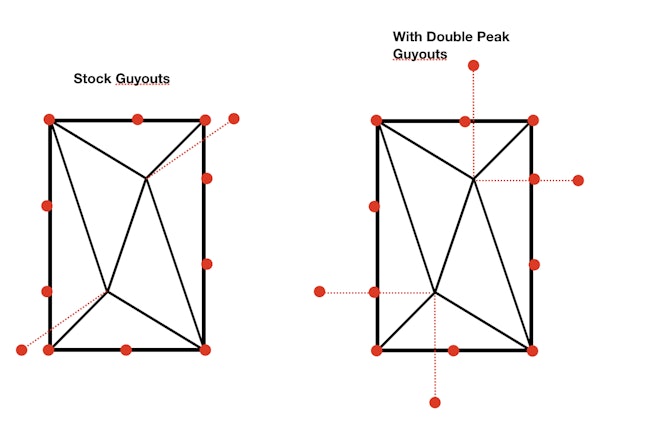




(Edited)

GrandPoobah1
5
Apr 25, 2019
dandurstonGotta love the detailed answers you provide. Thank you so much!

PAW1
55
Apr 29, 2019
dandurstonHi Dan
For the Double Peak Guyouts, what about tying the 2nd guyout to the loop that attaches the lineloc to the tent? That way you could closed the vent it needed. Which if it's THAT windy, you probably would want to.

dandurston
5116
Dan Durston
Apr 29, 2019
PAW1Yeah you can do that. Tying it right to the pole tip is the most direct connection but it still works wells to tie it outside. I think it's a bit better to tie to the LineLoc rather than the grosgrain so you aren't scrunching the grosgrain.
You can actually tie on two additional guylines (3 total) if you want. Super solid but normally big time overkill:
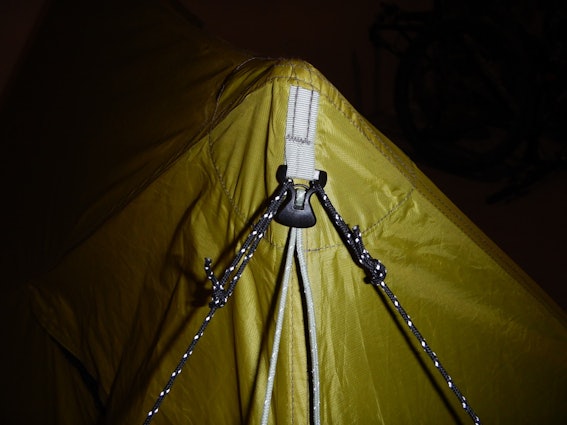
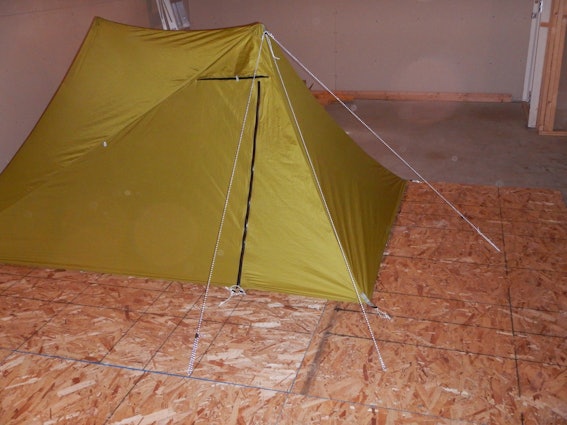


(Edited)